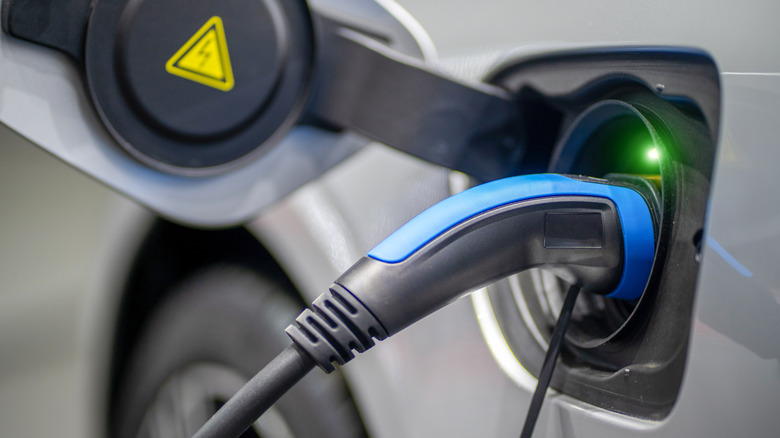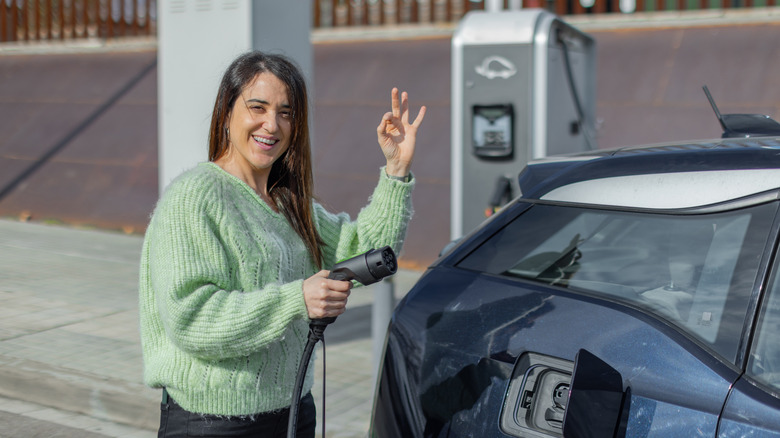The Clever Way Cities Are Solving EV Charging Woes
Electric Vehicle (EV) range anxiety and charging concerns are the technology's biggest sticking point for most consumers, and maintaining a sufficient charging infrastructure will be the biggest challenge moving forward. This is a particular challenge in large cities, where residents of apartments and condos above street level can't install personal charging stations like many homeowners. As for public EV chargers, in populated areas they tend to be in commercial areas, along highways, or in other spots less accessible to residents. To make EV charging more convenient for residents, some cities are taking a creative approach to the problem. The Czechian capital of Prague announced earlier in September that it had a plan to install 6,000 new charging points by 2030 to help prepare for the European Union's transition to exclusively zero-emissions vehicles.
Prague's goal is to install 1,500 of those charging stations by the end of 2026, and the city is doing that by converting some existing lampposts to EV chargers. These level 2 chargers take advantage of 230-volt AC power available across Europe, meaning many EV owners will be able to gain dozens of miles of range in a few hours. The cost of the initial 1,500 chargers is almost 500 million Czech Koruna, which equals about $24 million at current exchange rates. Prague is a city of over 1.3 million people, and the government sees this initiative as a way to measurably improve their lives. Deputy Mayor for Transport Zdeněk Hřib told Yahoo! News, "Without accessible charging options, electromobility will remain the privilege of a small group. Prague must ensure that every resident has the opportunity to make the switch."
Other cities have similar solutions
Los Angeles, — where over half the residents are renters — has also latched onto this idea and begun mounting EV charging stations on existing streetlights. The city also installed LED bulbs in the lamps to reduce power draw, connecting the 240-volt power lines already in place to Level 2 chargers with retractable cables. A company called Voltpost is installing streetlight chargers in the Detroit area, and the city of New York worked with electrical utility Con Edison to install100 curbside chargers in 2024. The Big Apple hopes to have 10,000 such stations installed by 2030, five years before the state's ban on internal combustion engine (ICE) vehicles goes into effect. There are also six new EV chargers at Phoenix, Arizona public libraries as part of that city's effort to install 500 public charging points by 2030.
Smaller cities are also taking steps to improve their EV charging infrastructure. Lancaster, Pennsylvania received a $3.1 million federal grant to install 74 electric charging stations in public parks and low-income neighborhoods in the city. Lancaster deputy director of public works Cindy McCormick told Lancaster Online these locations "align with areas where residents don't necessarily have access to charging and off-street parking, which is an impediment for people to purchase electric vehicles."
New York City is partnering with private firms to build a 24-hour public EV charging station at JFK airport with 12 DC fast chargers and 53 additional chargers, and car companies are stepping in to fill in the gap as well. A consortium of eight global automakers including BMW, Stellantis, Honda, and Hyundai/Kia teamed up on a new charging network called Ionna, with the goal of building 30,000 North American Charging System (NACS) stations in the United States.

